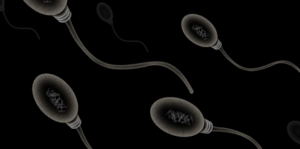If a couple is having difficulty conceiving a child due to low-quality sperm, in-vitro fertilization is always an option…although it frequently isn’t successful. A simple new device could help, by selecting only the best sperm to do the job.
First of all, there are already methods of separating the strongest-swimming sperm from the duds.
In one technique known as swim-up, a sperm-hospitable medium is placed atop a semen sample in a test tube, then left for about an hour. Only the healthiest sperm will swim up into that medium, where they can be collected.
In another technique called density gradient centrifugation, a test tube is filled with liquids of differing densities, with a semen sample at the top. When that test tube is spun in a centrifuge, the healthiest sperm will make their way through the denser liquids to the bottom of the tube, while the weaker sperm will be trapped in the upper layers.
Unfortunately, according to scientists from Australia’s University of Technology Sydney, both methods can cause DNA fragmentation and cell death due to the introduction of reactive oxygen species. That’s where the new 3D-printed disc-shaped polymer device comes in.
Designed to replicate the female reproductive tract, it incorporates a reservoir along the outside which is connected to a central collection well by intricate microfluidic channels. The idea is that when a semen sample is placed in the reservoir, only the strongest and most active sperm will make their way through the channels and into the well – and it reportedly works as intended.
“We conducted extensive testing against conventional IVF [in-vitro fertilization] selection methods, with the new method showing an 85% improvement in DNA integrity and an average 90% reduction in sperm cell death,” said the lead scientist, Prof. Majid Warkiani. “The sperm selected by our method also demonstrated better recovery after freezing than traditional methods.”
Source: New Atlas
Ask me anything
Explore related questions





